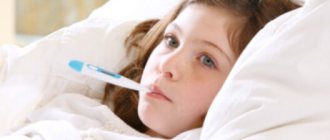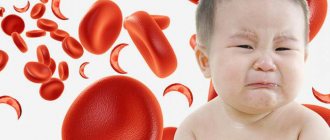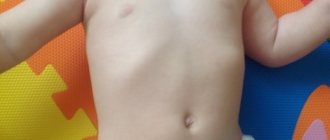All articles by the author
Author of the article: Maxim Fadovsky
Healthy and healthy lifestyle specialist.
Having become a mother, a woman never stops wanting to remain beautiful. Not everyone manages to regain the shape they had before giving birth. At first, the issue of health is more pressing than external attractiveness.
The process of childbirth takes a huge amount of effort, but after 2 hours the body starts a recovery program.
How to get in shape at home
Pregnancy and childbirth almost always change a woman’s figure; it’s rare that anyone can boast that they haven’t gained weight after giving birth and look the same as before.
If a woman is not comfortable with the extra pounds she has gained and wants to regain her attractive body shape, then she should think about restoring her figure as early as possible.
Where to begin
To begin recovery after childbirth, it is necessary to pay increased attention to the changes that have occurred and monitor them:
- Vaginal discharge. At the first stages they will be abundant, gradually becoming less intense and lighter. There is no need to be afraid of this. The uterus is cleansed in a similar way, gradually returning to its previous state. If the discharge does not stop for a long time, you should consult a doctor.
- Seams. If stitches were placed during childbirth, you should avoid strong tension and ensure that the stitches do not become inflamed.
- Genital organs. It is necessary to establish lactation, this contributes to the correct hormonal levels of the body and restoration of the uterus after childbirth, normalizing the cycle. When breastfeeding, you may not have periods for several months.
As health improves, the issue of appearance becomes more acute. The problem of a woman’s postpartum recovery must be solved comprehensively and step by step. Even if you have not gained excess weight during pregnancy, your belly may become bulging due to weakening muscles. At first, while active physical activity is prohibited, wearing a bandage is recommended. The bandage is worn for 7-10 hours during the day, during the first 2-3 months.
Sets of exercises for the abdomen
If you are thinking about where to start training after giving birth, you need to consult with a specialist to eliminate all contraindications.
Breathing exercises are used to restore the abdomen after childbirth. The vacuum exercise has a good effect: you need to inhale deeply, then exhale deeply, drawing in your stomach as much as possible, and hold your breath for 10-30 seconds. Perform on an empty stomach. Do 5-7 approaches, gradually increasing the time you hold your breath.
The “twisting” exercise helps strengthen the abdominal region: lying on your back, alternately bend your knee and the opposite elbow, trying to reach your elbow with your knee. You can start with 3 sets of 6-8 crunches.
Can a woman play sports?
Many people are interested in when they can do exercises after childbirth to restore their figure at home or even return to their usual sports activities. The answer largely depends on how the birth went.
If you have had a natural birth without complications, then after 2 weeks it is recommended to engage in physical activity with simple exercises. After 1-1.5 months, you can begin more serious yoga, shaping, water aerobics and other types.
Restrictions apply to women who have undergone a cesarean section; it is necessary to wait at least a month after the operation before performing simple physical exercises, and only after 3-4 months can you perform exercises to restore your figure after childbirth, aimed at the abs: crunches, lunges, bends. Pilates and yoga classes have a beneficial effect; they improve muscle mobility and elasticity.
How to lose weight quickly
It is unlikely that you will be able to lose weight quickly, and this will be fraught with negative consequences. The normal weight loss result is 300-500 g per week. If weight loss occurs more rapidly, it means that the body is exhausted and lacks nutrition. The fight against excess weight should be comprehensive and based on proper balanced nutrition, exercise and adherence to sleep and rest. You need to consume as many calories per day as you can burn. If there are unspent calories, they are converted into fat and extra pounds.
Some exercises you can do with your child
How to cope with back, muscle and joint pain
It’s not easy for joints and bones after childbirth. Let's figure out what is the cause of the discomfort that will go away in a few weeks.
Firstly, during pregnancy and after childbirth, weight increases. Over 9 months, a woman normally gains from 12 to 18 kg, and often more; Immediately after giving birth, the mother loses 6–7 kg of weight, and during the first week another 2–3 kg.
Hence the load on the skeleton, ligaments and muscles, which leads to pain in the sacrum and lower back.
Secondly, during pregnancy a woman’s center of gravity shifts. The muscles of the cervical, thoracic and lumbar spine, knee and hip joints get tired and overloaded.
Thirdly, the pregnancy hormone - relaxin - softens the ligaments and cartilage of the skeleton, which often leads to a slight displacement of the vertebrae and pinching of the nerve endings.
The good news is that after childbirth, the bones, vertebrae, muscles and joints gradually return to their “pre-pregnancy” state. All that remains is to wait until the body gets used to it again and help yourself cope with discomfort and pain.
This is why therapeutic exercises were invented. You can start it a month after giving birth. Before this, the use of anti-inflammatory ointments will help - strictly after consultation with a doctor. Sometimes, to make a young mother feel better, she is prescribed physical therapy. In case of severe pain, a specialist can give a referral for an MRI to make sure there is no intervertebral hernia. How to speed up the process
- Avoid heavy lifting for six months after childbirth;
- Watch your weight. Extra pounds increase back pain and slow down the body's recovery;
- Perform light therapeutic exercises regularly;
- Avoid sudden rises from a chair or bed and avoid straight bends;
- Find a comfortable position for feeding;
- Choose a comfortable hard mattress.
What happens to hormonal levels?
Hormonal levels change dramatically after childbirth. Progesterone ceases to be produced in large quantities, and after 6-8 weeks the first period comes, if you do not breastfeed. The risk of conception is reduced.
The body of a woman in labor is influenced by a large number of different factors and hormonal imbalance often occurs.
Symptoms of hormonal changes:
- depression, apathy, outbursts of aggression and anger.
- prolonged heavy menstruation;
- insomnia;
- lack of milk;
- hair loss, skin and dental problems;
- excess weight or sudden weight loss.
Experts say that after a few months, hormonal levels are restored after childbirth. If this does not happen, you need to consult a doctor.
What's behind your well-being: hormonal changes
Nature does not allow mothers to get bored and provides them with a change of mood and sensations.
You need to treat them with understanding and not panic. To begin with, it is important to know what is happening and how. After childbirth, a rapid “change of power” occurs in the body: the balance of chemicals changes dramatically. Rarely does this “restructuring” proceed smoothly. Most often, a sharp release of hormones leads to poor health, weight gain, stress and even depression. Don't panic! All mothers go through this process to one degree or another.
During pregnancy, expectant mothers undergo tests, and many, like ABC, remember the names of hormones: progesterone, estrogen, hCG... Hormones help give birth to a healthy child, prepare us for childbirth, and then for breastfeeding and even for the test of sleepless nights.
Immediately after the baby is born, the level of the “main pregnancy hormones,” progesterone and estrogen, drops sharply, as well as the level of thyroid hormone.
Now oxytocin and prolactin begin to be actively released. If the baby regularly suckles at the breast, then this very action contributes to the production of these hormones, which are necessary for the formation of milk and its removal from the breast, as well as for contraction of the uterus.
And that is great! Oxytocin causes positive emotions in the mother during feeding and allows the milk not to stagnate, making it easier for the baby to suck and reducing the risk of lactostasis and mastitis.
You are the most beautiful! Keep this in mind and don't put too much emphasis on temporary changes that you may not like right now. The body does a great job of creating a new hormonal balance. The body is actively changing, complex processes are taking place in it, the ultimate goal of which is the creation of a new life by your body. Even if you are unhappy with your reflection in the mirror, do not forget that all problems are only temporary.
How to determine that a serious hormonal imbalance has occurred.
Many mothers face more serious problems, and they don’t always have the resources to cope with them on their own. This is fine! Effective methods have already been developed to solve them: do not try to treat yourself, but immediately take advantage of the experience and support of specialists who exist precisely to help you.
Here are the main signs of serious hormonal imbalance:
- Frequent unmotivated mood swings, irritability, apathy;
- Constant sleep disturbances - drowsiness or, conversely, insomnia;
- Sudden weight fluctuations;
- Sudden changes in skin condition - sudden dryness or, conversely, oily skin;
- Recurrent migraines;
- Blood pressure surges;
- The appearance of edema;
- Sudden onset of vision problems;
- Persistent skin itching;
- Atypical body hair growth;
- Increased sweating.
Don't panic, these are all solvable problems! Just know that the simultaneous manifestation of several of these signs at once is a reason to immediately consult a doctor. Most likely, the doctor will prescribe an examination, which will include a general blood test, a blood test for hormones, an ultrasound of the ovaries, thyroid gland and mammary glands. After this, the doctor will prescribe the necessary treatment.
Cycle normalization
There is no exact time frame for the restoration of the menstrual cycle after childbirth. This indicator is influenced by the health status of the mother in labor, her age, nutrition and emotional state.
If a woman has full lactation and feeds the baby every 3 hours or more often, then a full menstrual cycle will not be restored until the frequency of feeding decreases.
The physiological cycle with full ovulation is restored on average at 4 months after birth, if frequent lactation is stopped. The cycle after childbirth in non-breastfeeding women is restored in approximately 1-1.5 months.
Recovery of the cycle after childbirth
Another important moment for a young mother after the birth of her baby is the restoration of the cycle after childbirth. During pregnancy, a woman does not have menstruation, but after the birth of a child, everything in the woman’s body—including the menstrual cycle—returns to normal.
If a mother resorts to breastfeeding her baby, she may forget about menstruation for a while: lactation is even considered one of the surest ways to prevent re-pregnancy. However, this is true for women whose children are exclusively breastfed, without supplementary feeding, and the baby is fed strictly in a certain mode: at least once every 3-4 hours, including at night. However, remember that in some cases, even if you are breastfeeding, it is possible to get pregnant in the first cycle, so be careful and careful.
If the baby’s mother does not breastfeed for some reason, she should wait for her first menstruation approximately 6-8 weeks after birth, but complete restoration of the cycle usually occurs by the second month. For mothers whose children are mixed-fed, the restoration of the menstrual cycle is expected in about 3-4 months.
It is interesting that after childbirth, almost all women who at one time suffered from pain during menstruation, part with this very syndrome - menstruation ceases to be accompanied by pain. In addition, the duration of the menstrual cycle may also change: if before childbirth the interval between menstruation was 21 or 31 days, after childbirth the duration of the cycle is often “averaged”, amounting to 25 days.
It is important to pay attention to the duration of menstruation itself: on average, menstruation lasts 3-5 days, but too short or excessively long menstruation (from 1-2 to 7-8 days) should be a reason to consult a doctor. As well as too small or, conversely, quantitatively large volumes of menstrual blood, as well as spotting on the eve of or immediately after the end of menstruation.
In general, there are no general specific time frames for recovery of the cycle after childbirth: in each individual case, depending on many factors, recovery occurs on an individual basis. Thus, the restoration of the cycle after childbirth is influenced by the age of the woman in labor and her state of health, the course of pregnancy and possible complications during childbirth, nutrition and the mother’s adherence to sleep and rest, the psychophysiological and neuro-emotional state of the woman.
In conclusion
Often after childbirth, women report physical discomfort, bad mood, fear of responsibility, a constant desire to sleep, and causeless anxiety. All these symptoms are typical for postpartum depression. However, there is no need to be afraid. All this is treatable and quite normal for the postpartum period. First of all, moral support is required, which can be provided by friends, relatives or girlfriends who have already become mothers and have experienced similar feelings. In addition, if you are very tired, ask your relatives to help you, try to devote every free minute to rest and yourself. The fact is that many women after childbirth themselves provoke a depressive state caused by fatigue.
It is logical that from the first days of being at home, every minute is occupied, if not by the baby, then by cleaning, dinner and household chores. However, if you think sensibly, nothing bad will happen if your husband cooks the dumplings himself, your mother or friend goes for a walk with the baby instead of you, and the dishes sit in the sink for an hour longer. Namely, you will devote this hour to yourself. Just soak in the bathroom, take care of yourself, run to the hairdresser to get your hair in order, or just devote time to sleep - the choice is yours. The important thing is that with the birth of a child, you do not cease to be a woman who needs care and rest just like the rest of the household. Therefore, make it a rule to make time for yourself. In this case, you are not afraid of any depression or bad mood, but increased attention from your husband and the happy laughter of your child are guaranteed.
Especially for beremennost.net - Ira Romaniy
What will your first period be like?
After the restoration of menstruation after childbirth, the first menstruation in nature should not differ in any way from the prenatal period. Initially, for 1-3 hours, there may be a pulling sensation in the lower abdomen and the appearance of a small amount of dark-colored discharge. After 3-4 hours they acquire the standard color of blood. Duration – 3-5 days, depending on the woman’s health condition. Your period also ends: within 3-4 hours the discharge begins to lighten and stops.
Short or excessively long discharge should alert you and be a reason to consult a doctor.
How to recover after childbirth if you are over 35 years old
For the most part, how the recovery period after childbirth will proceed and how long it will last depends on what physical shape you were in before pregnancy, how the pregnancy and childbirth itself proceeded, as well as your diseases that you suffered from before pregnancy. The older a woman is, the more likely it is that these factors will not be on her side.
With age, the elasticity of tissues is lost, so getting the muscles of the vagina, abs and back in shape will be more difficult at 40 years old than at 20. Also, the cardiovascular system is subject to greater stress in older mothers, and the metabolism slows down every year.
Actually, if you received the necessary medical care in a timely manner and led a healthy and active lifestyle, then you just need to follow the general tips for restoring the body. You can add more effort specifically to your problem areas, and they are different for everyone. In addition, pay attention to the general tone of the body, be active, but do not overwork.
Don’t forget to take vitamin complexes; this is a must for mothers over 35 years old. This way you will quickly fill the deficiency of necessary substances.
Video: recovery after childbirth - how to lose weight and get your figure back
Of course, the birth of a baby for all mothers is the happiest moment of life, and the main thing is not to forget about it, not to focus on possible problems. It is absolutely not necessary that you will experience any negative consequences of childbirth. But being prepared for them means half coping with them. Beauty, health and self-confidence after the birth of a child are what can and should be achieved.
- Author: Alla Shcherbakova
Rate this article:
- 5
- 4
- 3
- 2
- 1
(8 votes, average: 4.5 out of 5)
Share with your friends!
Do I need to take special vitamins while breastfeeding?
In order to avoid health problems after childbirth, during pregnancy and lactation it is necessary to eat a balanced and healthy diet, diversify the diet with vitamins after childbirth to restore the body. First of all, you should pay attention to calcium. For better absorption, it must be combined with vitamin D, which can be obtained simply by being outdoors on a sunny day.
It is also important to get enough nutrients and microelements for the immune system. The main role in building a strong immune system is played by vitamins A, B, C, E. The most popular vitamin complexes are: Vitrum Prenatal, Alphabet Mom's Health, Supradin.
Recovery after childbirth while breastfeeding is more active if you add folic acid to your daily diet. This vitamin improves mood and helps get rid of postpartum depression, and is suitable for improving skin, hair and maintaining a healthy circulatory system.
Pay attention to B vitamins: B6 and B12 are aimed at forming and improving the functioning of the nervous system. Vitamin C has a general antioxidant effect.
Breastfeeding plays an important role in the baby's health. Therefore, a woman needs to get all the necessary vitamins and minerals daily from food or additional vitamin complexes.
Diseases during the recovery period after childbirth
hemorrhoids often worsen in women . Basically, dilatation of the veins of the lower intestine occurs during pregnancy. This occurs due to the strong pressure of the uterus on the pelvic floor and increased blood flow.
If the disease progresses, you should consult a doctor. In addition, it is important to pay attention to nutrition: it is advisable to introduce a lot of fiber-rich foods into your diet. Sitz baths with medicinal herbs will also help relieve the condition. To prepare them, you can use nettle grass, clover, alder leaves, or buy a special collection of herbs at the pharmacy.
Another ailment that can befall a woman during the postpartum period is postpartum depression . After the baby is finally born, the woman’s mood becomes joyful and upbeat. However, the postpartum period is characterized by so-called mood swings, which can develop into a state of postpartum depression. Doctors claim that frequent mood changes after childbirth are a characteristic condition for the period when such tremendous changes occur in the body. But if, after returning home from the maternity hospital, the whole burden of problems in caring for the baby falls on the young mother, in addition, she is breastfeeding the child and at the same time trying to restore her own figure, then such efforts can lead to moral exhaustion and, as a result, to a depressive state. Therefore, it is extremely important that all the daily chores with the young mother are shared by her home assistants, and that the woman has the opportunity to rest and relax at least a little. Then recovery after childbirth will take place without unpleasant manifestations of depression.
Exercises for training the uterus and vagina
Experts have concluded that women's health is directly related to the condition of the muscles of the uterus and vagina. Their elasticity prevents the appearance of hemorrhoids and inflammation, reduces pain during menstruation and protects against gynecological diseases. Restoring the vagina after childbirth is an important task that ensures comfort and normalization of the functioning of the entire body as a whole.
Exercise 1. First, you need to feel where the muscles are. To do this, during urination, try to hold the stream, the entrance muscles of the vagina will help you do this. Squeeze the entry muscles as hard as you can and hold for 10 seconds to 5 minutes. Perform this exercise to restore the uterus after childbirth in different positions: sitting, standing, lying down, about 20 times a day.
Exercise 2. Alternately squeeze the anal sphincter muscles and the entrance muscles of the vagina.
Exercise 3. Aimed at postpartum restoration of the internal muscles of the vagina. To do this, you need to push something out of yourself. In order to feel the work of the muscles, you can use intimate toys or perform exercises during sexual intercourse. It is necessary to feel the difference between the input and internal muscles.
Hair is back in shape
Young mothers know that it is not so easy to find time to wash your hair. And hair loss becomes an unpleasant surprise. Do not worry! Every mother deals with this problem, and it gradually goes away. Your hair will be thick and shiny again.
Where do hair problems come from? Indeed, during pregnancy, due to the high level of estrogen, hair practically did not fall out. But after childbirth, the body “catch up” with lost time, and even losing up to 500 hairs per day during this period is considered normal. Remember that after a few months this intense hair loss will stop. Although the structure of the hair may change, and some people with straight hair will suddenly develop curls.
To speed up the process of hair restoration, you need to know that their condition, in addition to hormones, is affected by the balance of microelements in a woman’s body. You should not be deficient in iron, sulfur, folic acid, zinc and vitamin B12. Therefore, it is advisable to include foods high in these substances in your diet.
How to help your hair return to its previous shape:
- Do not use metal combs and brushes that damage the hair roots;
- Massage the scalp with a brush with soft natural bristles 2 – 3 times a day;
- Try to use a hairdryer less often and avoid exposing your hair to direct sunlight;
- Pay attention to the chemical composition of products for oxen - it is better to give preference to those that contain natural ingredients.
By the way, for those who were bothered by excess hair growth on the face and body during pregnancy, a happy time has come: the body will most likely get rid of unnecessary “cover” in the next six months.
How the perineum is restored
Restoration of the perineum after childbirth is a delicate problem that concerns all women in labor. During childbirth, the perineal tissues stretch and unpleasant consequences may occur:
- pain, bruising and swelling;
- cracks and tears in the area of the vaginal opening;
- problems with urination and bowel movements;
- haemorrhoids.
In cases of ruptures, sutures are applied, which are removed after 5 days or self-absorbable threads are used.
To eliminate negative consequences, you need to follow a number of rules:
- To avoid infection, you should wash yourself with warm water every time after visiting the toilet. You can use douching based on pharmaceutical herbs.
- Balanced diet. Eating liquid foods helps prevent constipation.
- Abstinence from intimacy for 1-1.5 months. After childbirth, the uterus is susceptible to a variety of infections and injuries. Any careless movement can lead to ruptures and cause inflammation. It is better to have sex with penetration after complete intimate recovery after childbirth.
Sometimes when a large baby is born, damage to the cervix occurs. In this case, doctors apply sutures using self-absorbing threads that do not need to be removed. Many people are interested in the question of how quickly the uterus recovers after childbirth. During recovery, it changes in weight and volume. Immediately after the birth of the baby, its weight is about 1 kg, after a week it decreases to 500 g. And after 2-2.5 months, the weight of the organ is 50 grams. Every day, the body of the uterus decreases in size, descending to the level of the pubis.
What will happen to your foot size?
For many people, their foot size increases slightly over time. This is also a common occurrence in women after childbirth. It's all about hormones that are responsible for the softness of ligaments and muscles, as well as joint mobility before childbirth. Weight gain during pregnancy causes the foot to become slightly larger. Wearing too-tight shoes and high-heeled shoes during pregnancy has also been shown to have a similar effect.
Sometimes after pregnancy, problems with joints may occur or “spurs” may develop - you should not endure discomfort or self-medicate. An orthopedic specialist will help you cope with your problems.
When will your breasts return to normal?
During pregnancy and lactation, a woman’s body is rebuilt and this does not have the most favorable effect on the female breast. At this time, the mammary glands increase by 2-3 sizes. At the end of lactation, the breasts return to their previous size. But the elongated skin no longer takes its original shape, as a result of which the breasts become less elastic and stretch marks appear. The complex for breast restoration after childbirth includes: massage, physical exercise and hardware procedures.
Breast reconstruction after childbirth
Another “problem” place, about the shape of which a woman may be sad after childbirth, is the breast. A woman should be aware that childbirth can change the shape of her breasts even at the stage of bearing a child. And only then implement “prevention actions”: choose a comfortable and correct bra, monitor your posture and regularly perform simple exercises to strengthen your chest muscles.
In principle, the same recommendations remain relevant for the postpartum period for the purpose of breast reconstruction. Plus, some more are added to them, such as the practice of a contrast shower, massage sessions and breast skin care with the help of special creams or cosmetic oils.
More on the topic
Menstruation after childbirth while breastfeeding
Is it possible to get pregnant a month after giving birth?
When can you get pregnant after childbirth?
When do periods begin after childbirth?
Sexual life after childbirth
A contrast shower will help improve blood flow and circulation; it would be nice, in addition to just a contrast shower session, to also arrange a chest hydromassage. Spend about 5-8 minutes on each breast, making sure that the water temperature is comfortable. After the procedure, moisturize your breast skin with natural oils. Please note that when breastfeeding, factory-made cosmetics are contraindicated, but natural homemade masks will come in handy.
2-3 times a week, massage your breasts using oils (for example, mixing almond oil, wheat germ oil and olive oil). Massage with oils is useful if stretch marks have made themselves felt after childbirth, as well as to moisturize the skin and restore breast elasticity.
And, of course, don’t forget about proper nutrition and physical activity: the set of exercises must be designed in such a way that there is also room in it for exercises to strengthen and restore the breasts after childbirth.
Common problems that arise during the postpartum period
In addition to obvious changes in figure after childbirth, a woman also experiences a number of other changes in appearance that affect the condition of her skin and hair, and various diseases may develop. Psychological problems are common during postpartum recovery.
Hair fall out
3-5 months after giving birth, women may notice increased hair loss. The process is physiological, and most often the loss stops 10-12 months after birth. At this time, it is necessary to eat food rich in microelements and vitamins and use high-quality hair cosmetics.
Good nutrition is very important
Haemorrhoids
At the final stage of bearing a child, its head can compress the blood vessels, and blood accumulates in the pelvis. This contributes to the appearance of hemorrhoidal lumps. To avoid negative consequences, eat soft foods enriched with oils. Treatment of hemorrhoids today is not a problem and can be done successfully at home.
How and when you can have sex
There is no definite and only correct answer to the question of when you can have sex after the birth of a child. It all depends on how long the recovery after childbirth lasts for a particular woman in labor. Experts call the minimum period 4 weeks. During this time, the tone of the vagina should be restored, the internal organs will fall into place, and micro-tears will heal.
Postpartum depression
Postpartum depression is detected in almost 15% of births. How long depression will last depends on the woman in labor and her individual characteristics. Symptoms include: depressed mood, anxiety, apathy, fear, gastrointestinal upset. After hormonal levels are restored, mild labor depression goes away. In severe cases, it is necessary to contact a qualified specialist to avoid serious consequences.
Early postpartum period
Immediately after the birth of the baby and placenta, doctors examine the placenta and perform all the necessary procedures to care for the woman in labor. A thorough examination of the placenta and placenta is carried out to ensure that the entire process went smoothly and that no fragments remain in the uterine cavity. If part of the placenta is found to be retained in the uterus or if certain injuries are present, the woman undergoes some additional procedures. Sometimes it is advisable to conduct an ultrasound examination of the uterus after some time.
After the birth process is completely over, a heating pad with ice is placed on the perineum and lower abdomen of the woman in labor. This procedure stimulates contractions of the uterus and its restoration to its previous size. In addition, exposure to cold stops bleeding. Keep the heating pad on for no more than 20 minutes.
After giving birth, a woman must urinate. This action is sometimes quite problematic, since a woman who has just given birth experiences a spasm of the bladder sphincter or bladder atony . Initially, you should try to reflexively evoke the process of urination: for example, you can listen to the sound of flowing water, and mentally tune into the process. If there is no bleeding, a warm heating pad on the area above the pubic area will do. If nothing works, the woman is given a catheter or medications are used. After the urination process has been restored, you should drink more to replenish your water balance.
But women who have already given birth several times, after childbirth, sometimes suffer from manifestations of urinary incontinence due to bladder atony. A similar phenomenon is typical for those whose pelvic floor muscles have stretched and lost tone. In this case, experts advise performing Kegel exercises several times every day.
After returning to the maternity hospital ward, the new mother should be very careful in all actions, as severe weakness remains after childbirth and large blood loss. Recovery after childbirth is a smooth and gradual process, so a woman should be prepared for dizziness and fainting in the first days. Therefore, you need to get out of bed very smoothly, slowly and calmly. There is no need to rush when walking. Even if the mother suddenly heard the baby crying, there is no need to “reactively” rush to him: it is better not to fuss, talk to the child tenderly, and sing to him. After all, the baby already recognizes his mother’s voice.
In the first days and nights after childbirth, the optimal sleeping position is on your stomach. If your health allows, you can start small workouts a day or two after giving birth. At first they can be done while lying down, for example, raising your arms, making light movements with your legs. Every day such exercises can be done more intense. Don't forget about breathing exercises - they can not only help tone the body, but also improve overall well-being.
Diet or proper nutrition?
Dieting often means restricting food intake in order to reduce calories. But in fact, a diet is a diet or, if you like, a nutritional culture (a set of rules for eating).
Here is a diet for those who want to lose weight (based on my own experience and knowledge).
- Limit yourself to baked goods and sweets. They contribute to the formation of fatty layers and are not beneficial for the baby if you are breastfeeding. Increase the amount of fresh vegetables. Take vitamins for nursing mothers.
- Eat often, but little by little at one meal (no more than 200 g of food). Since all excess nutrients will definitely be stored in reserve.
- Try not to eat 4 hours before bed so that when you fall asleep you have an empty stomach. The body burns fat most intensely during sleep, so don’t interfere with it.
- Drink as much fluid as possible (water, juices, tea), especially during breastfeeding. Water promotes the rapid removal of decay products from the body, and thus they will not accumulate in the body and poison it.
- You need to train on an empty stomach (1-2 hours after eating), otherwise the training will be ineffective.
And avoid eating immediately after your workout. Wait at least 2 hours. The fact is that during training, the fat burning mechanism is launched, and it continues for approximately 2 hours after training. If you eat immediately after training, the effectiveness of your workouts will decrease.










